Related Research Articles

Ralph Philip Klein was a Canadian politician and journalist who served as the 12th premier of Alberta and leader of the Progressive Conservative Association of Alberta from 1992 until his retirement in 2006. Klein also served as the 32nd mayor of Calgary from 1980 to 1989.
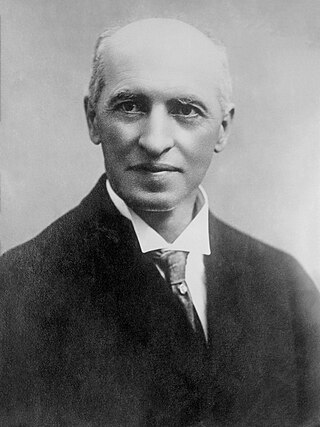
Arthur Lewis Watkins Sifton, was a Canadian lawyer, judge and politician who served as the second premier of Alberta from 1910 until 1917. He became a minister in the federal cabinet of Canada thereafter. Born in Canada West, he grew up there and in Winnipeg, where he became a lawyer. He subsequently practised law with his brother Clifford Sifton in Brandon, where he was also active in municipal politics. He moved west to Prince Albert in 1885 and to Calgary in 1889. There, he was elected to the 4th and 5th North-West Legislative Assemblies; he served as a minister in the government of premier Frederick Haultain. In 1903, the federal government, at the instigation of his brother, made Sifton the Chief Justice of the Northwest Territories. After Alberta was created out of a portion of the Northwest Territories in 1905, Sifton became the first Chief Justice of Alberta in 1907 and served until 1910.
There have been various groups in Canada that have nominated candidates under the label Labour Party or Independent Labour Party, or other variations from the 1870s until the 1960s. These were usually local or provincial groups using the Labour Party or Independent Labour Party name, backed by local labour councils made up of many union locals in a particular city, or individual trade unions. There was an attempt to create a national Canadian Labour Party in the late 1910s and in the 1920s, but these were only partly successful.
The Alberta Liberal Party is a provincial political party in Alberta, Canada. Founded in 1905, it is the oldest active political party in Alberta and was the dominant political party until the 1921 election, with the first three provincial Premiers being Liberals. Since 1921, it has formed the official opposition in the Legislative Assembly of Alberta several times, most recently from 1993 until 2012. Fourteen Liberals have served as Leader of the Opposition of Alberta.

Sir William Cornelius Van Horne, is most famous for overseeing the construction of the first Canadian transcontinental railway, a project that was completed in 1885, in under half the projected time. He succeeded Lord Mount Stephen as president of the Canadian Pacific Railway (CPR) in 1888. Van Horne was responsible for launching the sea transport division of the CPR, which inaugurated regular service between Vancouver and Hong Kong in 1891. He also presided over the expansion of the CPR into the luxury hotel business in the 1890s. Van Horne was also a prominent member of the syndicate that created the Cuba Railroad Company in 1900. He lived at the Van Horne Mansion in Montreal's Golden Square Mile.
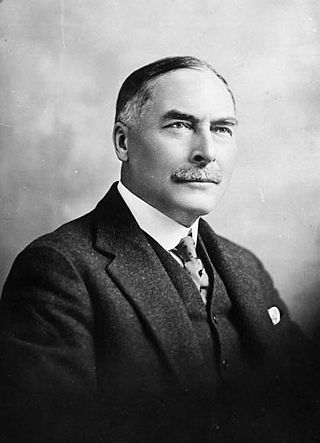
Sir James Alexander Lougheed, was a businessman, lawyer and politician from Alberta, Canada. He served as a senator for 35 years, and held a number of Cabinet positions.
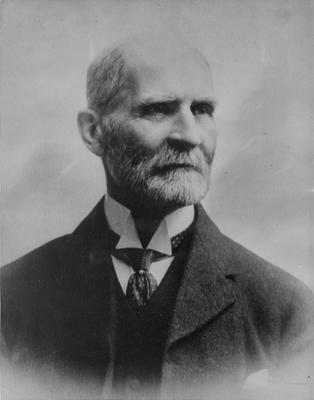
James Delamere Lafferty was a Canadian physician and politician. Lafferty served as Registrar for the Northwest Territories Medical Ordinance regulator to professionalize the practice of medicine. he was actively involved in establishing the College of Physicians and Surgeons of Alberta and the Canadian Medical Association's Alberta Division, which was later known as the Alberta Medical Association. He served one term as the fifth mayor of Calgary from January 1890 to January 1891.
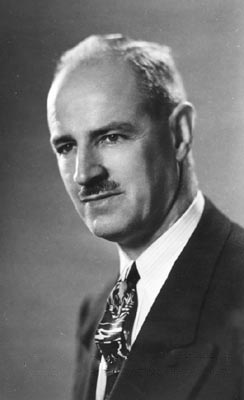
John Walter Grant MacEwan was a Canadian farmer, professor at the University of Saskatchewan, Dean of Agriculture at the University of Manitoba, the 28th Mayor of Calgary and both a Member of the Legislative Assembly (MLA) and the ninth Lieutenant Governor of Alberta, Canada. MacEwan University in Edmonton, Alberta, and the MacEwan Student Centre at the University of Calgary as well as the neighbourhoods of MacEwan Glen in Calgary and MacEwan in Edmonton are named after him.

Calgary-Buffalo is a current provincial electoral district in Calgary, Alberta, Canada. The district is one of 87 districts mandated to return a single member (MLA) to the Legislative Assembly of Alberta using the first past the post method of voting. Calgary-Buffalo is currently represented by NDP MLA Joe Ceci.

Calgary-Hays is a provincial electoral district mandated to return one member to the Legislative Assembly of Alberta, Canada using the first past the post method of voting.
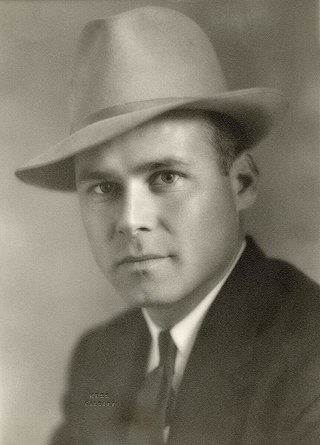
Harry William Hays was a Canadian politician, 27th Mayor of Calgary, Cabinet minister in the government of Lester B. Pearson, and Senator from Alberta.
Donald Hugh Mackay was the 26th Mayor of Calgary, Alberta, Canada.
Robert A. "Bob" Russell was a Canadian politician from Alberta. He served as the President of the Alberta Liberal Party, and a municipal councillor in St. Albert, Alberta.

Robert Chambers Edwards was a Canadian newsman, humorist, editorialist, entrepreneur, and provincial politician. He is best known, as the writer and publisher of the early 1900s weekly newspaper, the Calgary Eye Opener.
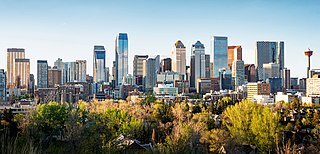
Calgary is the largest city in the Canadian province of Alberta. It is the largest metro area within the three prairie provinces. As of 2021, the city proper had a population of 1,306,784 and a metropolitan population of 1,481,806, making it the third-largest city and fifth-largest metropolitan area in Canada.

D'Alton Corry Coleman was a Canadian railway executive and businessman. He began working for the Canadian Pacific Railway (CPR) in 1899, and was promoted through its ranks until serving as president from 1942 to 1947. He oversaw expansion which added 3,620 kilometres (2,250 mi) of branch lines in the Canadian Prairies, and guided Western Canada railways through the Great Depression. He developed the CPR to support logistics during World War II, including manufacture of munitions, expanded shipbuilding and established one of the country's first private blood donation clinics. Canadian Pacific Air Lines was established under his leadership, and he became chairman of the Canadian Pacific Steamship Company, Canadian Pacific Hotels and other subsidiaries. He maintained good relations between the CPR and its unionized workers and believed in promoting from within the company.

Richard William McIver is a Canadian politician who has represented Calgary-Hays in the Legislative Assembly of Alberta since 2012. A member of the United Conservative Party (UCP), McIver is the current minister of municipal affairs.

William Egbert was a Canadian physician and politician. He was the third lieutenant governor of Alberta, from 1925 to 1931.

The Calgary White Hat is a white felt cowboy hat which is the symbol of both the Calgary Stampede annual rodeo and the city of Calgary. Created by Morris Shumiatcher, owner of Smithbilt Hat Company, it was worn for the first time at the 1946 Stampede. In the early 1950s, Mayor of Calgary Donald Hugh Mackay began presenting the white hat to visiting dignitaries, a tradition that the mayor's office continues to this day. Thousands of tourists and groups also participate in "white hatting ceremonies" conducted by Tourism Calgary and by volunteer greeters at the Calgary International Airport. In 1983, the Calgary White Hat was incorporated into the design of the flag of Calgary.

Calgary-Peigan is a provincial electoral district in Alberta, Canada. The district will be one of 87 districts mandated to return a single member (MLA) to the Legislative Assembly of Alberta using the first past the post method of voting. It was contested for the first time in the 2019 Alberta election.
References
- ↑ "Archived copy" (PDF). www.calgary.ca. Archived from the original (PDF) on 11 January 2005. Retrieved 30 June 2022.
{{cite web}}: CS1 maint: archived copy as title (link) - ↑ Marshall 2016, p. 8.
- ↑ Marshall 2016, p. 9.
- ↑ Marshall 2016, p. 11.
- 1 2 Marshall 2016, p. 10.
- 1 2 3 Marshall 2016, p. 12.
- ↑ Marshall 2016, p. 13.
- 1 2 Marshall 2016, p. 15.
- 1 2 Marshall 2016, p. 16.
- 1 2 3 Marshall 2016, p. 17.
- ↑ Marshall 2016, p. 19.
- ↑ Marshall 2016, p. 21.
- ↑ Marshall 2016, p. 22.
- 1 2 3 Marshall 2016, p. 24.
- ↑ Marshall 2016, p. 25.
- ↑ Marshall, Thin Power
- ↑ Marshall 2016, p. 201.
- Bibliography
- Marshall, Andy (2016). Thin power : how former Calgary Mayor Rod Sykes stamped his brand on the city ... and scorched some sacred cows . Victoria, B.C.: FriesenPress. ISBN 978-1-4602-8396-7.